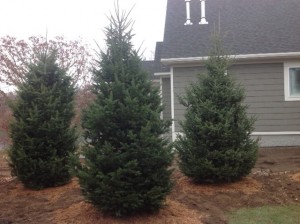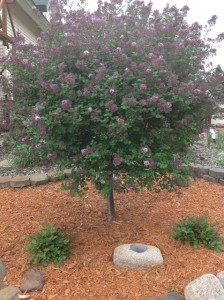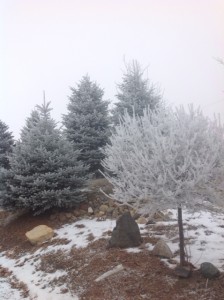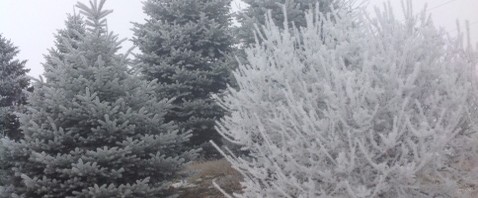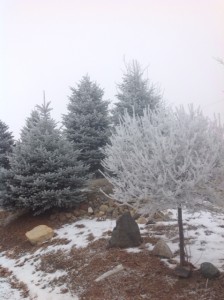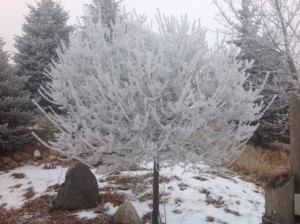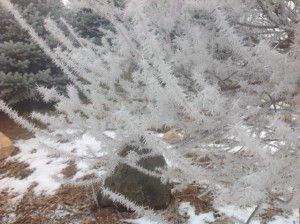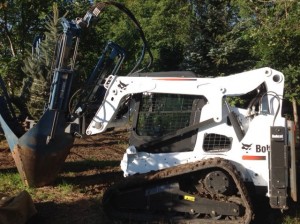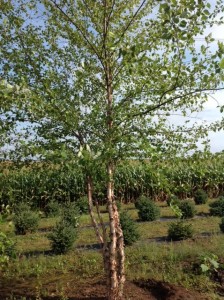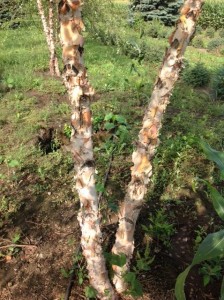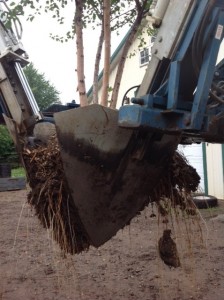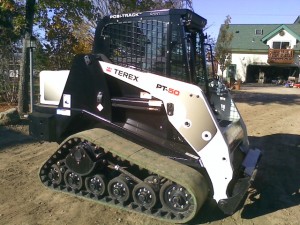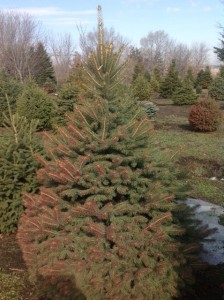Winter finally came to a close as far as the calendar is concerned. We are still in March and had some more snow after experiencing some great warm, above average temperatures for about 2 weeks. People are anxious to get to there Spring projects, even though it is quite early to start digging in the ground. It is a great time to do some tree pruning. A good rule to follow for the safest time to prune trees is as long as the month has an “R” in it, then it is safe. Pruning shade tree this time of year also allows you to see the true branching of the tree. I recommend pruning lower limbs up to about eye level. This will allow walking below trees easy.
Evergreen trees are pruned to maintain 1 dominant leader & prune off anything irregular. The photo above is a Balsam Fir planting we completed last year. These trees were placed so that they will eventually provide some privacy from a neighboring property.
Arbor Hill Tree Farm is completing our pruning for the year and will soon be out in our fields burlapping trees. If you have a project in mind for the Spring & are in need of some trees, we are currently taking orders. Customers can contact us to come out & walk our fields to select trees if they wish, or we can select trees for them. As soon as weather permits, we start planting trees at customers sites. Typically end of April. For much more information on our products, pricing & services Arbor Hill Tree Farm offers, please review our website or contact Jerry at 651-245-7978 or email us at jerry@arborhilltreefarm.com.


